Human-elephant conflict levels have been high in the Mara with the rains bringing ripening crops into focus for elephants. Many elephants located in Olarro Conservancy were remaining safely in the conservancy during the day, but crop raiding farms at night. The human-elephant conflict with the surrounding communities is at a breaking point and unfortunately, as a result of these farmers needing to protect their crops and thus livelihoods, there have been numerous elephants injured with spears and arrows in recent weeks.
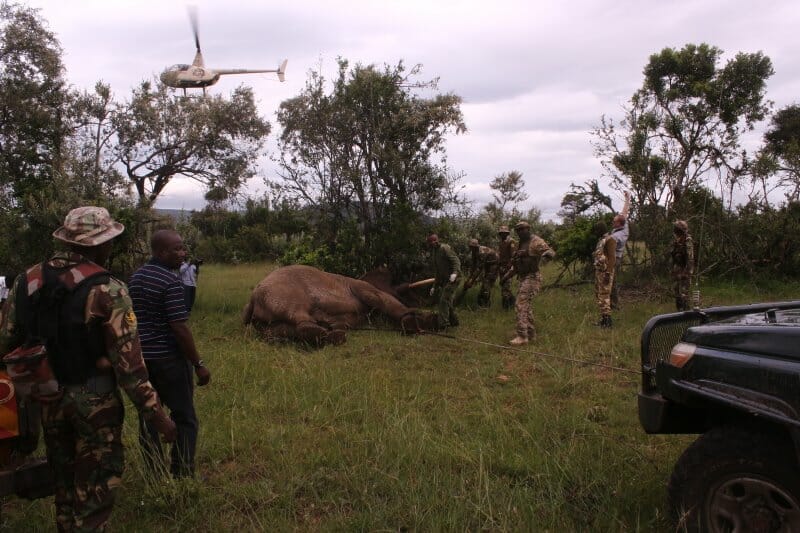 The team working in unison to provide treatment for this injured elephant. Courtesy of Olarro Conservancy Facebook page.
The team working in unison to provide treatment for this injured elephant. Courtesy of Olarro Conservancy Facebook page.
Many injured elephants were reported by Olarro Conservancy rangers this past week. Mara Elephant Project’s Karen Blixen Camp Ree Park Safari Robinson helicopter was called in to provide reconnaissance and help identify from the air any injured elephants. Once MEP C.E.O. Marc Goss and Olarro Conservancy rangers noted the numbers and the elephants were identified by abscesses on their bodies, treatment was needed. So, we called in our partner, the David Sheldrick Wildlife Trust (DSWT) Mara Mobile Vet Unit with Kenya Wildlife Service (KWS) vet Dr. Njoroge to treat these injured elephants.
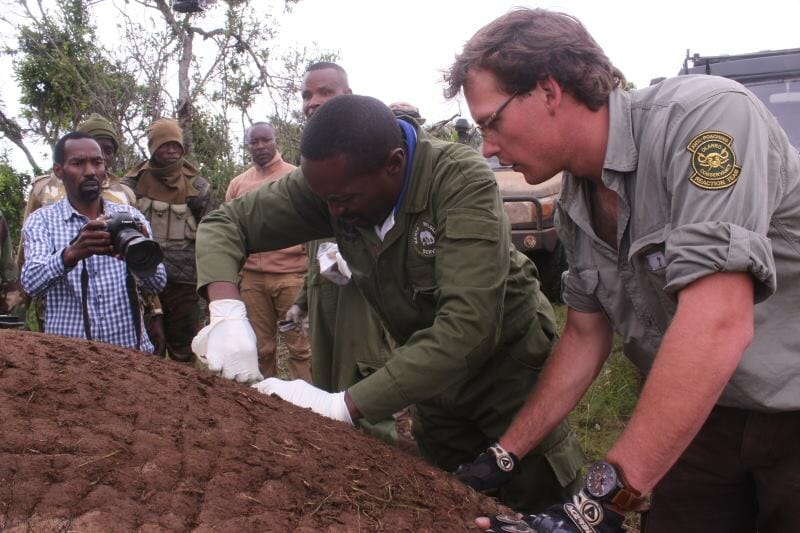
Vet Dr. Njoroge working on one of the five injured elephants. Photo from Olarro Conservancy Facebook page.
In one of the latest joint operations between MEP, Olarro Conservancy, DSWT and KWS we successfully treated five injured elephants in the Mara ecosystem.
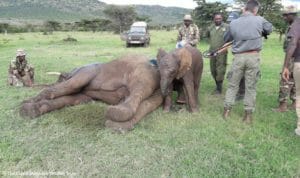 The MEP helicopter was used to, not only provide reconnaissance, but also helped Dr. Njoroge locate, dart and treat each elephant. The first elephant that was identified and treated in northern Olarro happened to be darted from an Olarro vehicle with assistance from the helicopter. What made this first elephant difficult was that despite it being a bull elephant, a young calf presumably a brother, was being very protective of the male and would not leave his side (pictured left). This meant that all involved had to be extremely cautious not to stress the baby out during the procedure. Luckily, everything went well and once the treated elephant was revived, both joined the herd again.
The MEP helicopter was used to, not only provide reconnaissance, but also helped Dr. Njoroge locate, dart and treat each elephant. The first elephant that was identified and treated in northern Olarro happened to be darted from an Olarro vehicle with assistance from the helicopter. What made this first elephant difficult was that despite it being a bull elephant, a young calf presumably a brother, was being very protective of the male and would not leave his side (pictured left). This meant that all involved had to be extremely cautious not to stress the baby out during the procedure. Luckily, everything went well and once the treated elephant was revived, both joined the herd again.
The second large bull was found injured in the southern area of Olarro and was successfully darted from the helicopter with ground crews moving in to secure the area. The third treatment operation involved two elephants that were all part of a large herd in the Ngoswani area within the hills. MEP C.E.O. Marc Goss maneuvered the injured elephants into a more accessible area for the ground crews to dart. The ground crew and helicopter all worked together to successfully treat both elephants, commuting between them by helicopter. Both were found to have arrow wounds, and both were successfully treated and revived.
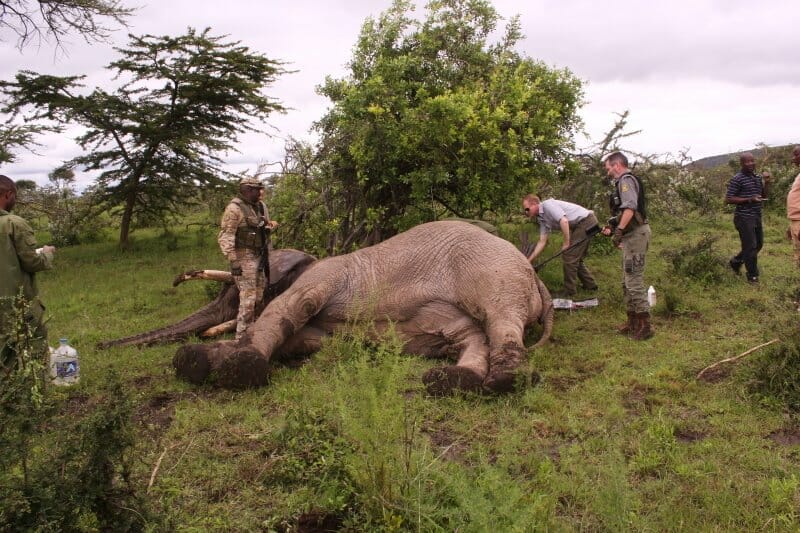
The metal detector was extremely beneficial in determining deep foreign objects. Photo from Olarro Conservancy Facebook page.
The final elephant treated was found shortly after the darting of the previous two. She was successfully darted from the helicopter and her arrow wound treated and Dr. Njoroge revived her, eventually calling it a day after having utilized all the available drugs in stock on site.
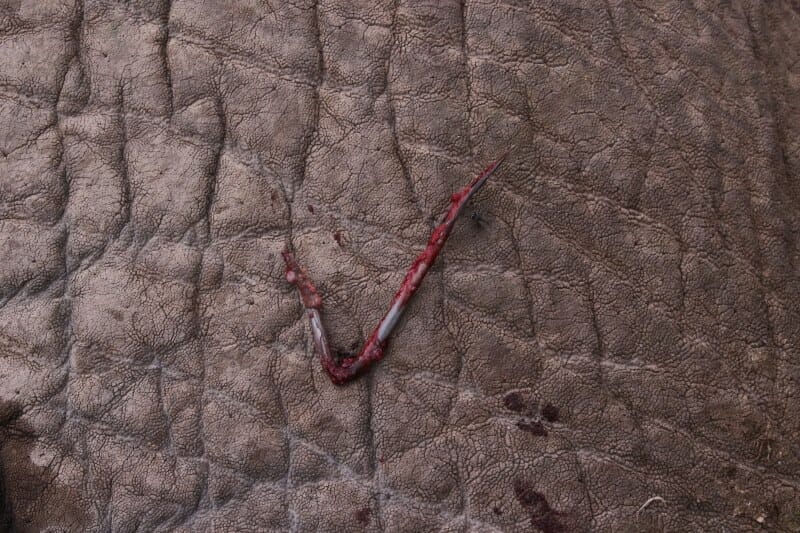
An arrow pulled from one of the injured elephants. Photo from Olarro Conservancy Facebook page.
In total, five elephants were successfully treated within a 20-hour period thanks to partnerships between DSWT, KWS, Olarro Conservancy and MEP.
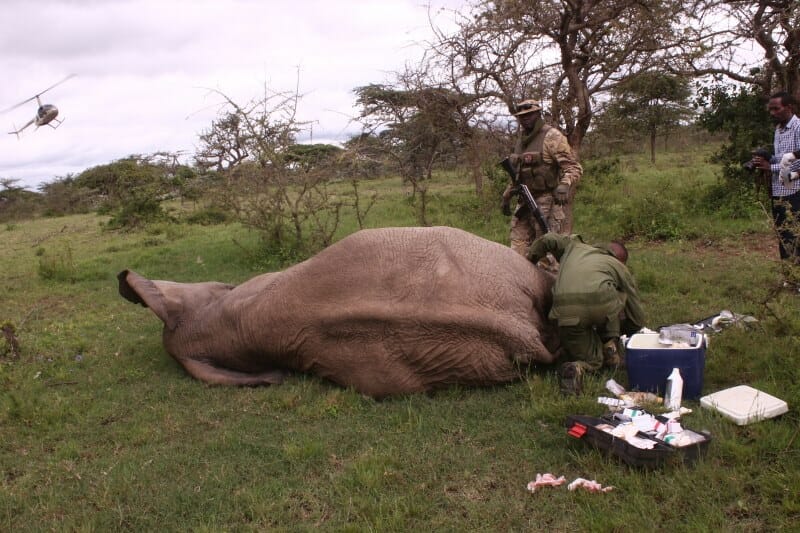
Dr. Njoroge treating an injured elephant while the MEP helicopter keeps other elephants away.
Unfortunately, another mission similar to this will be in MEP’s near future. Though the Olarro Conservancy ranger teams are doing everything they can to mitigate human-elephant conflict in the future in this area, the security need is high, and they are thinly spread outside of the conservancy borders. This is why joint operations with partners is essential to ensure increased levels of security in this area and intervene when necessary.


